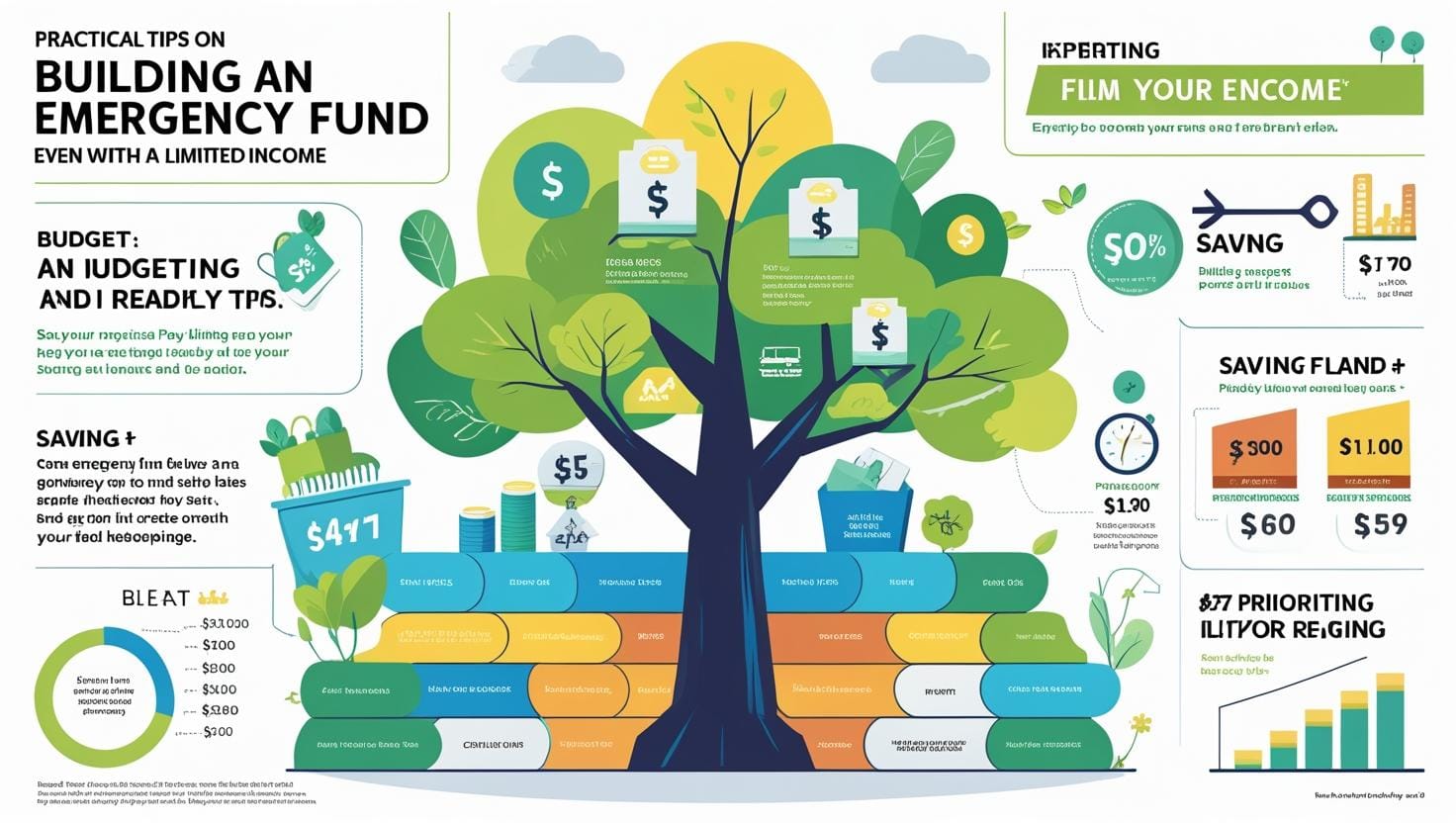How to Build an Emergency Fund — Even If You’re Living Paycheck to Paycheck
You don’t need to earn a lot to build an emergency fund. Start small, save smart, and sleep peacefully knowing you're prepared for life’s surprises.

Imagine this: Your phone breaks. Your pet needs a vet visit. Your company delays salary.
Now what?
Most people panic. Some borrow. Others swipe a credit card they can’t repay.
What if you had a small safety net — just ₹2,000, ₹5,000, or ₹10,000 — to handle it calmly?
That’s the power of an emergency fund. And the best part?
You can build it slowly, even if you’re earning just enough to get by.
💡 What Is an Emergency Fund?
It’s simply money kept aside for unexpected events. Not for shopping. Not for a Goa trip. Just for true emergencies like:
- Medical bills
- Job loss
- Sudden travel
- Family support
- Phone or laptop crash (if you rely on it for work)
🧠 Why You Absolutely Need One
Emergencies don’t knock. They just arrive.
- A student may suddenly need to pay for an exam reappearing fee
- A home-maker might face a health emergency at home
- A freelancer may lose their client unexpectedly
Without a backup fund, even small problems become big stress.
📊 How Much Do You Need?
Start small.
Forget the “3 months salary” advice for now. That’s overwhelming.
Just aim for:
- ₹1,000 → If you’ve never saved before
- ₹5,000 → Small buffer for everyday life
- ₹15,000+ → Comfortable base emergency fund
Once you hit one goal, grow to the next. Like levels in a game.
💸 How to Start — Even If You’re Barely Managing
1. Save ₹50 a day (or ₹350/week)
Skip 1 chai, 1 snack, or 1 impulse scroll-buy.
Put that ₹50 into a separate account, jar, or digital wallet.
2. Use Cashback Apps
Use PhonePe, Paytm, or CRED smartly.
Save every ₹10 cashback. Don’t spend it. Treat it as part of your emergency fund.
3. Sell Unused Stuff
That guitar you haven’t played in a year?
That extra bag, old phone, or gym equipment?
Sell it locally and transfer the amount to your emergency fund.
4. Save First, Spend Later
Even if it’s ₹100 a week — treat saving like a bill.
If you can pay Swiggy ₹300, you can save ₹100.
🏦 Where Should You Keep Your Emergency Fund?
It should be:
- Easy to access, but not too easy to spend
- Safe (no market risk)
- Visible, so you feel progress
Best options:
- A separate savings bank account
- Digital wallet like Paytm (if you’re disciplined)
- Liquid mutual fund (for ₹10,000+ amounts later)
Avoid:
- Investing it in stocks
- Keeping it in your regular spending account
⚠️ Emergency Fund ≠ Regular Savings
Don’t confuse this with:
- Vacation fund
- Wedding savings
- New phone budget
This is your “break glass in case of emergency” money.
Treat it like an umbrella — you hope you don’t need it, but you’re glad you have it.
🙅♂️ Common Mistakes to Avoid
“I already have FD”
FDs take time to break + may have penalties. Keep emergency funds more liquid.
“I’ll use my credit card if needed”
That’s not an emergency fund. That’s a loan.
“I’ll start once I earn more”
Start now. Even ₹20/day adds up.
💬 Final Thoughts
You don’t need ₹1 lakh to feel financially safe.
You just need a start.
Build your emergency fund like you’d build a house — brick by brick.
₹50 today, ₹100 tomorrow… soon, you’ll have peace of mind money can’t buy.
📢 Bonus Tip:
We’re working on a free Emergency Fund Starter Tracker.
Want it in your inbox? Subscribe.
This post is for educational purposes only and should not be considered financial advice.
